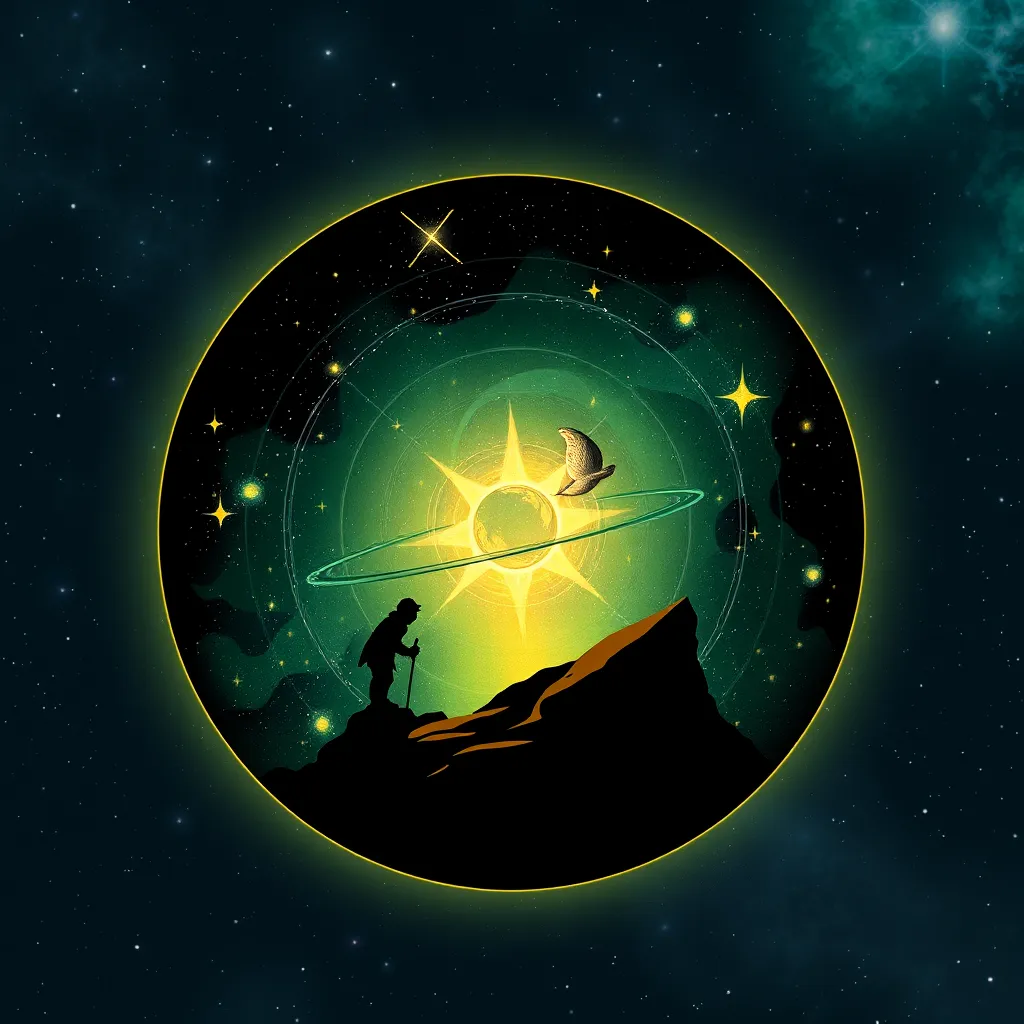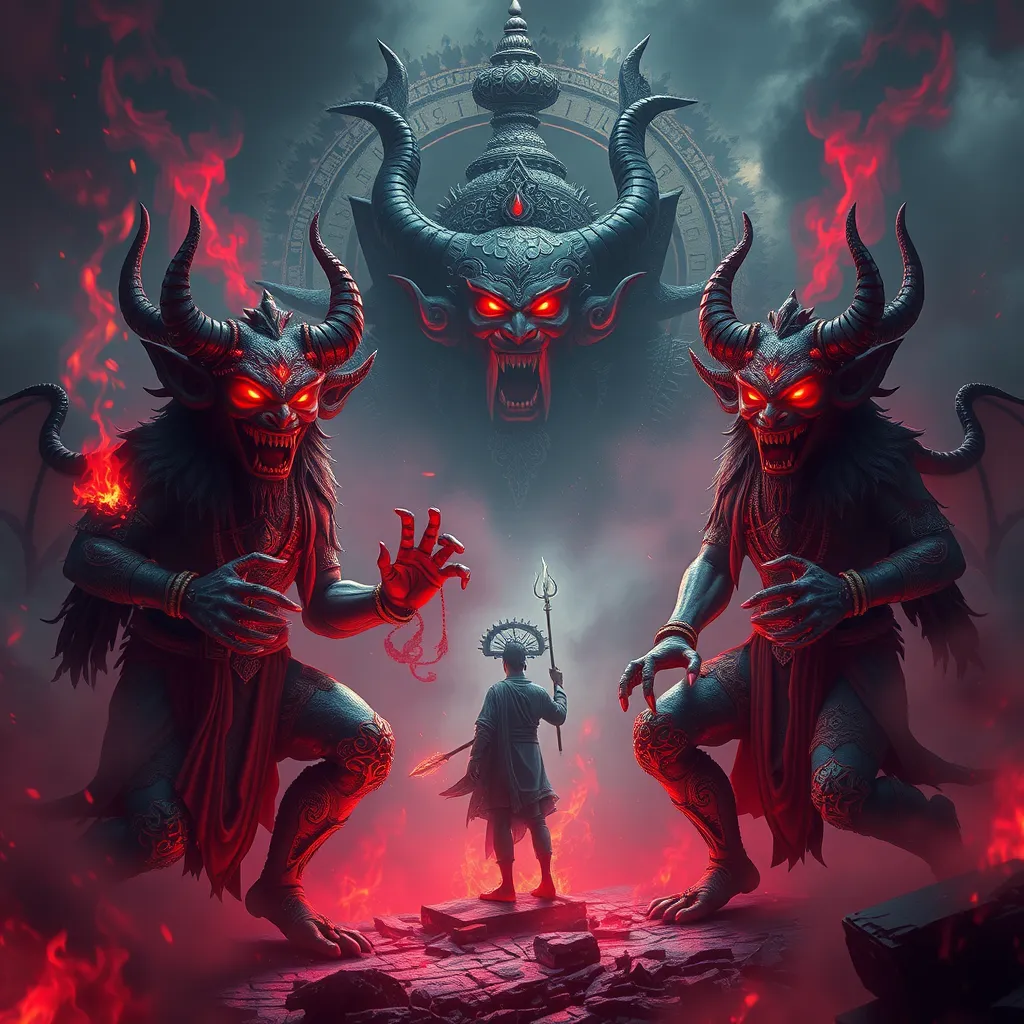The Goblin’s Guide to the Stars: Exploring Goblin Astronomy and Cosmology
I. Introduction
In the hidden nooks of the world, goblins have crafted a rich tapestry of culture and lore that is as vibrant as the stars they admire. From their mischievous antics to their clever inventions, goblins have a unique perspective on life that extends beyond the Earth and into the cosmos. Astronomy holds a special place in goblin society, serving as a guide for their journeys, a source of inspiration for their stories, and a fundamental aspect of their understanding of existence.
This article aims to delve into the intriguing world of goblin astronomy and cosmology, exploring how these small but insightful beings perceive the universe, the tools they use to study it, and the impact of celestial phenomena on their daily lives.
II. The Goblin Perception of the Cosmos
A. Mythological Foundations: Goblin Creation Stories
Goblin creation stories are filled with fantastical elements that explain their origins and relationship with the cosmos. According to some legends, the first goblin emerged from a fallen star, embodying the mischievous spirit of the universe. This mythological foundation provides a framework for their understanding of the stars as more than mere points of light; they are seen as the ancestors and guiding spirits of goblinkind.
B. The Role of Stars in Goblin Folklore and Legends
In goblin folklore, stars are often depicted as characters in various tales. They are thought to engage in playful mischief, influencing the fortunes of goblin communities. Some stories recount how certain stars guided lost goblins home, while others describe celestial events as omens of change or fortune.
C. Distinctive Naming Conventions for Celestial Bodies
Goblins have their own distinctive naming conventions for celestial bodies, often drawing from their unique language and culture. For example:
- Star of Mischief: Represents the spirit of adventure and unpredictability.
- The Goblin’s Eye: A particularly bright star believed to watch over goblin communities.
- Moon of Whispers: Associated with secrets and hidden knowledge.
III. Tools of Goblin Astronomy
A. Traditional Instruments: From Bone Telescopes to Star Charts
Goblins are resourceful, often crafting their astronomical instruments from materials at hand. Traditional tools include:
- Bone Telescopes: Made from the bones of large creatures, these telescopes allow goblins to observe the stars more closely.
- Star Charts: Hand-drawn maps that depict the positions of stars and constellations, often embellished with colorful illustrations.
B. The Art of Stargazing: Techniques and Practices
Stargazing is an art form among goblins, blending observation with storytelling. Goblins often gather at night to share tales while observing the sky, using their knowledge of constellations to convey messages and lessons. They have developed techniques to enhance their stargazing experience, such as:
- Finding dark locations away from artificial lights.
- Using natural landmarks as reference points for celestial navigation.
C. Influence of Natural Elements on Goblin Astronomical Tools
The environment plays a crucial role in shaping goblin astronomical tools. For instance, the availability of different materials influences the construction of telescopes, while local weather patterns affect the frequency and timing of stargazing sessions.
IV. Goblin Star Maps and Navigation
A. Historical Overview of Goblin Cartography
Goblin cartography has evolved over centuries, influenced by their nomadic lifestyles and trade practices. Early maps were simple sketches, but as goblins traveled and traded with other races, their maps became more sophisticated and detailed.
B. Key Constellations and Their Significance
Certain constellations hold special significance in goblin culture, often tied to their myths and legends. Some key constellations include:
- The Great Goblin: A constellation representing strength and resilience.
- The Trickster: Associated with cleverness and cunning, often used as a guide for goblin travelers.
C. Navigational Techniques Utilized by Goblin Traders and Travelers
Goblins are skilled navigators, often relying on the stars to guide their journeys. They use the following techniques:
- Celestial navigation by identifying key stars and constellations.
- Using the phases of the moon to determine travel times and routes.
V. Goblin Cosmology: Theories of the Universe
A. Goblin Perspectives on the Creation of the Universe
Goblin cosmology is rich with theories about the universe’s creation. Some believe in a cyclical universe, where stars are born and die in an eternal dance. Others view the cosmos as a living entity, filled with spirits that influence the fate of goblins.
B. Concepts of Time and Space in Goblin Philosophy
Goblins perceive time and space differently than other races. They often see time as a fluid concept, where past, present, and future coexist, and space as a vast realm filled with untold possibilities. This perspective influences their approach to life and their understanding of the universe.
C. The Intersection of Magic and Astronomy
Magic is deeply intertwined with goblin astronomy. Many goblins believe that celestial events can enhance magical abilities or influence spellcasting. This intersection fosters a culture where astronomy and magic coalesce, leading to unique practices and beliefs.
VI. The Impact of Goblin Astronomy on Daily Life
A. Agricultural Practices Based on Celestial Events
Goblins often align their agricultural practices with celestial events, such as planting crops during certain lunar phases or harvesting when specific stars appear. This connection between astronomy and agriculture enhances their yields and strengthens their bond with nature.
B. Festivals and Rituals Aligned with Astronomical Phenomena
Many goblin festivals and rituals are centered around astronomical events, such as eclipses, meteor showers, and solstices. These celebrations often involve:
- Storytelling and sharing of myths related to the cosmos.
- Performances that honor celestial bodies and their significance.
C. Goblin Architecture and its Astronomical Alignments
Goblin architecture often reflects their astronomical knowledge, with structures aligned to capture celestial events. For example, certain buildings may be oriented to maximize sunlight during the winter solstice or to align with the rising of specific stars.
VII. Contemporary Goblin Astronomy
A. Modern Influences and Changes in Goblin Astronomical Practices
In recent years, goblin astronomy has been influenced by interactions with other races and the advent of new technologies. While traditional practices remain important, many goblins are adapting to incorporate modern tools and knowledge.
B. Collaboration with Other Races: Exchange of Knowledge
Goblins have begun collaborating with scholars from other races, exchanging astronomical knowledge and practices. This collaboration has enriched goblin astronomy and fostered a greater appreciation for diverse perspectives on the cosmos.
C. The Future of Goblin Astronomy in a Changing World
As the world changes, so too does the field of goblin astronomy. The future may hold exciting possibilities, such as the integration of advanced technologies and further collaboration with other cultures, ensuring that goblin perspectives on the cosmos continue to thrive.
VIII. Conclusion
Goblin contributions to astronomy and cosmology reveal a rich and vibrant tradition that emphasizes their unique worldview. Through their stories, tools, and practices, goblins have cultivated a profound understanding of the cosmos that interweaves magic with science.
The enduring legacy of goblin stargazing invites us to explore and appreciate diverse astronomical perspectives. As we look to the stars, we are reminded of the myriad ways in which different cultures interpret the universe, enriching our collective understanding of the cosmos.



